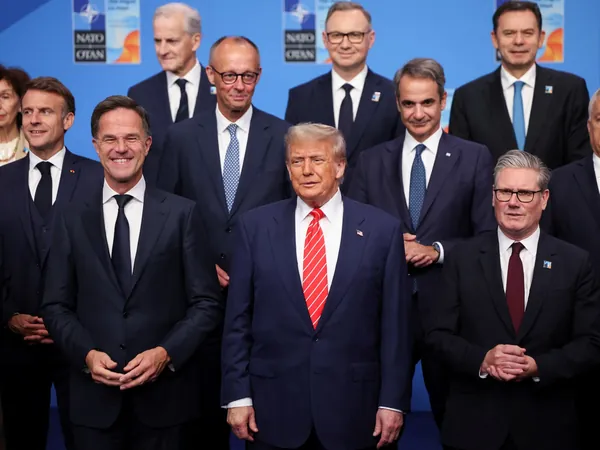
NATO's Bold New Defence Spending: A Shift from Healthcare and Education?
2025-06-25
Author: Amelia
NATO's New Defence Spending Target: A Game Changer
In a decisive turn of events at the recent annual NATO summit in The Hague, leaders from member countries agreed on a landmark deal to ramp up defence budgets significantly. The agreement was largely driven by a new goal pushed by US President Donald Trump, which mandates NATO countries to allocate 5% of their economic output towards defence and security.
From 2% to 5%: The Numbers Behind the Target
This ambitious target marks a staggering increase from the current commitment of 2% of GDP, amounting to an extra hundreds of billions of dollars annually over the next decade. Originally set in 2006, the 2% goal was embraced more fervently following Russia's annexation of Crimea in 2014, with member states vowing to meet this benchmark by 2024.
Who's Already Meeting the Mark?
Currently, 23 out of 32 NATO members have surpassed the 2% target, collectively spending 2.61% of their GDP on defence last year. Poland takes the lead with a robust 4.1%, while Estonia and the United States each allocate 3.4%. Other notable nations include Latvia at 3.2% and Greece at 3.1%. Interestingly, defense investments have surged in countries bordering Russia, such as Estonia and Lithuania, which are now spending significantly more than they did a decade ago.
A New Spending Model: Strategic Investments
The new 5% target divides allocations into two components: 3.5% for direct military expenditures, including troop costs and weaponry, and 1.5% for broader defence investments. These include crucial infrastructure upgrades like roads, bridges, cybersecurity initiatives, and energy pipeline protections, all reflective of the heightened threat perception following the ongoing conflict in Ukraine.
The Challenge of Funding: Where Will the Money Come From?
As NATO members ponder how to reach this new fiscal target by 2035, financial strategy becomes essential. Countries will need to identify budget sources to accommodate this rise in spending without draining funds from essential services. For instance, UK officials have yet to clarify their plans for financing.
The EU's Role in Defence Funding
To support this initiative, the European Union has provided leeway for members to increase military spending by 1.5% annually for four years without facing penalties related to budget deficits. Furthermore, EU ministers have backed the establishment of a €150 billion ($174 billion) arms fund, enabling countries to secure loans for joint military projects.
The Controversial Balancing Act: Defence vs. Social Welfare
The potential shift in funding priorities raises critical questions about the impact on other vital sectors. While no NATO member currently spends more on defence than on healthcare or education, the implementation of the 5% target could lead 21 nations to prioritize military budgets over educational investments.
In Conclusion: A New Era of Defence Spending?
As the world continues to evolve politically and militarily, NATO's new spending commitments may reshape national budgets and priorities. Member states are at a crossroads, facing the challenging task of balancing defence investments with essential services that underpin daily life.









 Brasil (PT)
Brasil (PT)
 Canada (EN)
Canada (EN)
 Chile (ES)
Chile (ES)
 Česko (CS)
Česko (CS)
 대한민국 (KO)
대한민국 (KO)
 España (ES)
España (ES)
 France (FR)
France (FR)
 Hong Kong (EN)
Hong Kong (EN)
 Italia (IT)
Italia (IT)
 日本 (JA)
日本 (JA)
 Magyarország (HU)
Magyarország (HU)
 Norge (NO)
Norge (NO)
 Polska (PL)
Polska (PL)
 Schweiz (DE)
Schweiz (DE)
 Singapore (EN)
Singapore (EN)
 Sverige (SV)
Sverige (SV)
 Suomi (FI)
Suomi (FI)
 Türkiye (TR)
Türkiye (TR)
 الإمارات العربية المتحدة (AR)
الإمارات العربية المتحدة (AR)